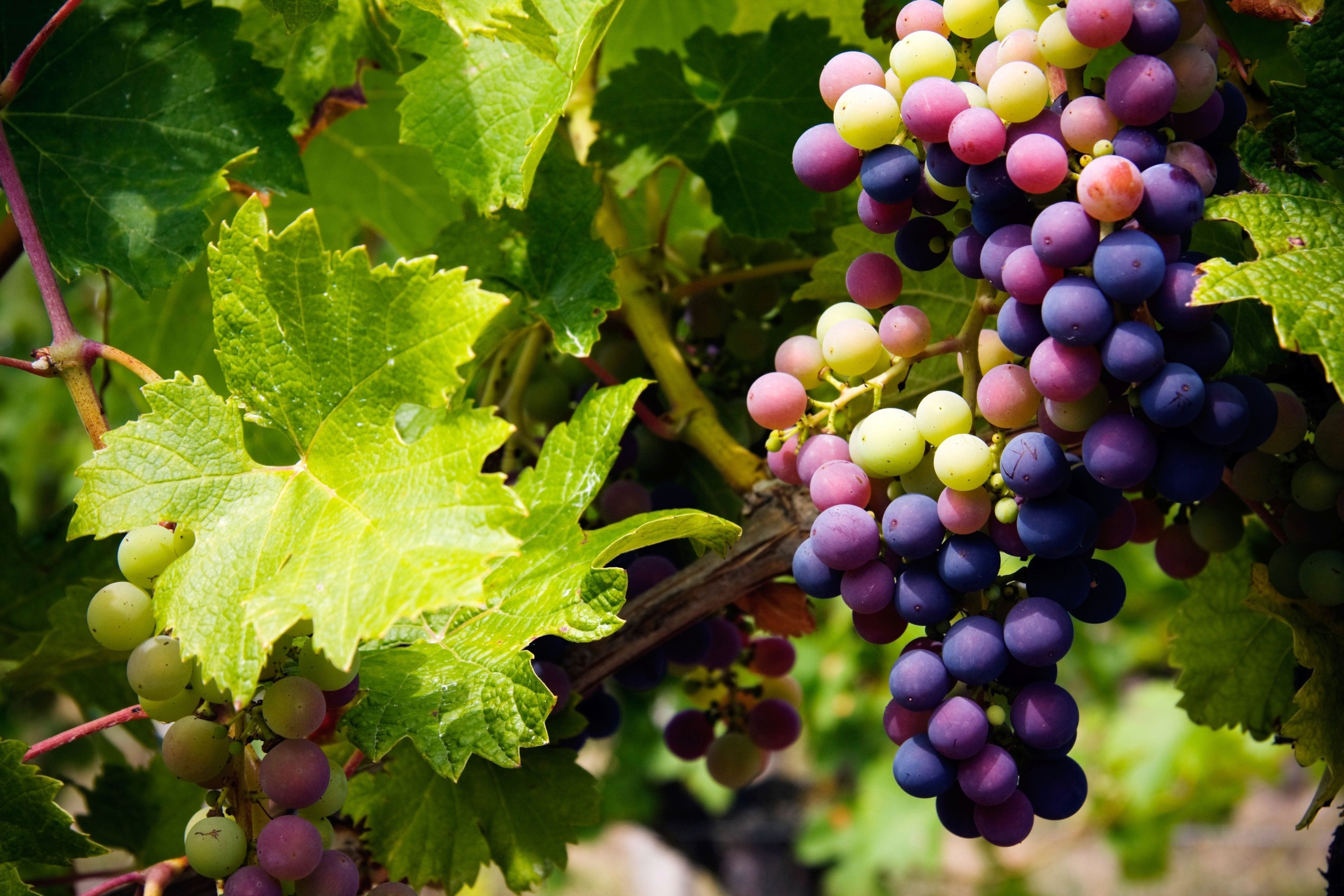
In my neck of the woods, the Pacific Northwest, it seems every other day a new winery pops up. Some of them make it and some of them don't; the result not only of savvy marketing but the quality of the wine which directly correlates to the superiority of the grape. For the home gardener, growing grapevines may create a lovely shaded oasis or arbor, or an ornamental detail with the added bonus of edibility. But how do you know when to harvest grapes at the peak of their sweetness and optimum flavor? Read on for some grape harvest info.
When to Harvest Grapes
The precise time for picking grapes is dependent on the location, length of growing season, variety of grape, crop load and the intended use of the grape. Heavy crop loads take longer to mature. The optimum time for harvesting grapes will vary year to year as do environmental conditions -- sometime after the berries turn color (veraison). Commercial grape growers rely on more scientific methods to determine when to harvest the grapes such as precise pH levels and sugar contents (Brix) that are established with testing. The home grower may make use of the following to ascertain the ripening of grapes and proper harvest time: Color - Harvesting grapes for use in jellies or wine making must occur at just the right stage of maturity for maximum sweetness. Grapes change color from green to blue, red or white, depending upon the variety. Color is one of the indicators of ripeness. However, it is not the most reliable indicator, as many varieties of grapes change color well prior to ripening. Still, when completely ripe, the whitish coating on the grapes becomes more evident and the seeds turn from green to brown. Size - Size is another gauge of the ripening of grapes. When mature, the grapes are full size and a bit less firm to the touch. Taste - Hands down, the best way to ascertain if your grapes are ripe enough to harvest is to taste them. Sample the grapes three to four weeks prior to the approximate harvest date and continue to taste the grapes as they mature. Try to take samples at the same time of day from a variety of areas on the vine. Grapes, unlike other fruits, do not continue to ripen once off the vine, so it is important to keep tasting until the grapes are uniformly sweet. Sample from sun exposed areas as well as those that are shaded. Ripeness and color of grapes is not reliant upon direct sunlight, but rather the amount of light that reaches the grape foliage results in high quality fruit. It is the leaves of the grape that engender the sugars, which are then transferred to the fruit.
Additional Grape Harvest Info
Uneven ripening may occur due to too many grape clusters on the vine (over-cropping), potassium deficiency, drought or other environmental stressors. Warmer than normal weather is often the cause of uneven ripening, wherein some berries stay sour, hard and green while others ripen and darken in color normally. Ripening berries are also extremely attractive to the birds. To protect the impending harvest, you may want to envelop the grape clusters in a brown bag tied to the cane or by netting the entire vine. Once you have ascertained it is prime time for a grape harvest, simply remove the clusters with hand shears. Grapes can be stored at 32 F. (0 C.) with 85 percent relative humidity, in a perforated bag for up to two months.
Sign up for the Gardening Know How newsletter today and receive a free copy of our e-book "How to Grow Delicious Tomatoes".

Amy Grant has been gardening for 30 years and writing for 15. A professional chef and caterer, Amy's area of expertise is culinary gardening.
